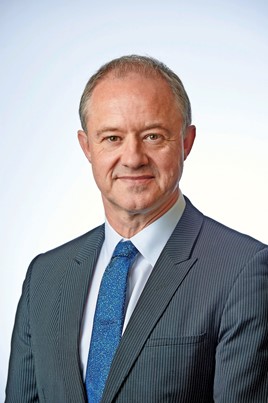So how will this withered expertise be revived, and put back front and centre? Have those skills left the company? Does it need to relearn operational skills from scratch?
“We do still have a great deal of operational experts in Network Rail, but they’ve gone on to quieter lives. Some of my colleagues will not thank me for saying this, but it needs to be said: There is currently a view in this organisation that if you want a quieter life, a better salary, a better office, a better phone - then you go to work on a project. Life is just so much easier on a project.”
So, you just need to scratch the surface in projects to find those operators?
“I see people now who have chosen to go into those areas because we haven’t built a career path for operators. NR’s Head of Operations currently reports to the Chief Engineer. Where is the career pattern that would cultivate and encourage good operators?”
You told our Breakfast Club that people of lesser operational experience were managing people of far greater operational experience?
“That is tough.”
That can’t be right…? You’re going to change that?
“Yes, absolutely,” he says with great emphasis. “There will be change through our rewards structures, through our professional capabilities.”
A new operating department? How overt are you going to be about it?
“We are going to be very explicit,” he says. “It’s not very ‘sexy’, but one of my senior directors is now our Network Services Director. Internally, this has been the subject I have had the most positive feedback on.
“This is from people in the operating function who feel as if they have been suppressed, neglected and marginalised. They have been frustrated that others have not understood the risks we potentially bear in terms of reliability, but also safety, when we corporately underestimate the importance of operating.”
It’s clear that the Haines era is going to involve very significant change within NR’s senior and middle management, and I sense that this time the permafrost would do well not to seek to delay, obfuscate or frustrate - not if they wish to keep their jobs, that is.
There are plenty of runes to be read here, but it’s going to need a big cultural change and a very different approach to leadership right through the company if Haines is to succeed.
DIGITAL RAILWAY
Is digital railway dead, following the departure of Digital Railway Group Managing Director David Waboso?
“No, absolutely not!” Haines insists. “It can’t be dead. Digital railway cannot be dead.”
Blimey, that seemed to hit a nerve!
“The only reason I talk less about digital railway is because the technology is not quite there yet - but the hard reality is that 60% of our signalling needs renewing in the next few years.
“Even with the sort of funding we are getting in CP6, we will not replace signalling like-for-like for the next 15 years, so we have to find a way of making it all work. What I think has been wrong is there has been too much talk about it and not actually breaking it down into the practical steps we can take.”
I suggest that when I talk to digital signalling experts, I am told constantly that it cannot work on a mixed-traffic railway, where lots of different types of trains, running at different speeds, run on a line with intermediate complex geographical nodes where other routes meet and cross. What works on a metro railway cannot work on our main lines, I am told.
“It’s a heck of a lot tougher if you overlay it on an existing conventional network - I absolutely get that. But we are going to have to make it work - forget about East Coast, how is HS2 going to work when it gets to Crewe? We have to find a way through this.”
There is great scepticism in Scotland, where the view is that conventional signalling will deliver all it needs at a fraction of the cost or complexity of any kind of digital system?
“I did a speech recently, at Transport Scotland’s request, to the Scottish IMechE Railway Division. And I made absolutely that point - that talking about ERTMS all over Scotland is absurd. On the West Highland Line, we have RETB, which last time I checked was functioning pretty well after 25 years.
“But if you asked Transport Scotland if it sees any value in traffic management in the Glasgow suburbs or on the East Coast, it would say ‘Absolutely!’ So let us be very clear on what the benefits are and the locations where digital signalling can work, certainly in the short term.
“We are testing on the East Coast, chiefly because of the limited life of the signalling in the South. If you chose not to do this, what would you be saying? It’s put-up-or-shut-up time for much of the supply chain, too, because the recently signed Rail Sector Deal promises 30% reduction in costs.”
So, how are you going to secure those 30% savings?
“That is why we are testing.”
WILLIAMS REVIEW
We close with a discussion about the Williams Review. And once again, Haines’ view is clear and very direct: let’s not wait.
“My big challenge is, let’s not wait for Williams to put things right for us. Let’s establish where we can work collectively to sort things for ourselves. I see parts of the system working really, really well currently.”
Where?












